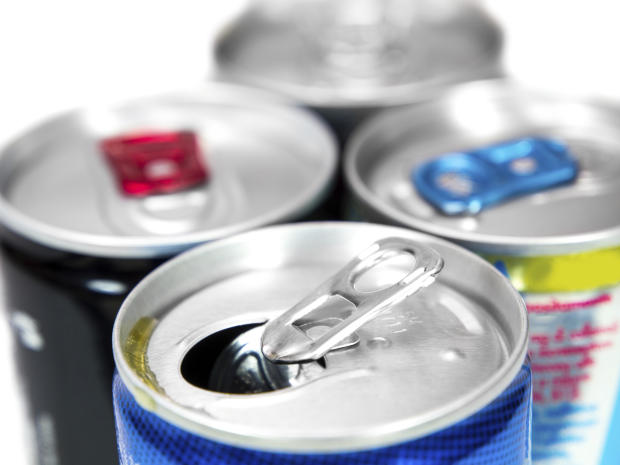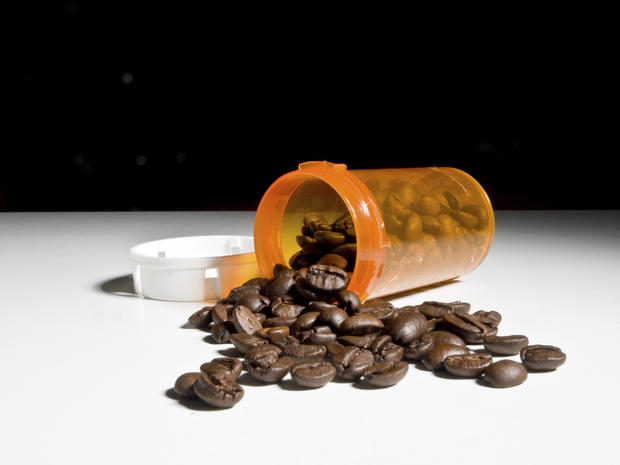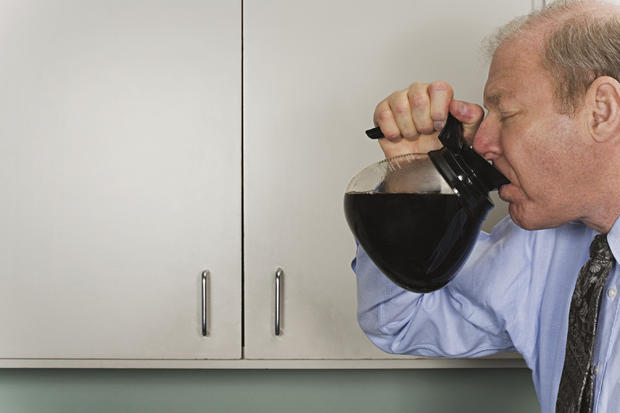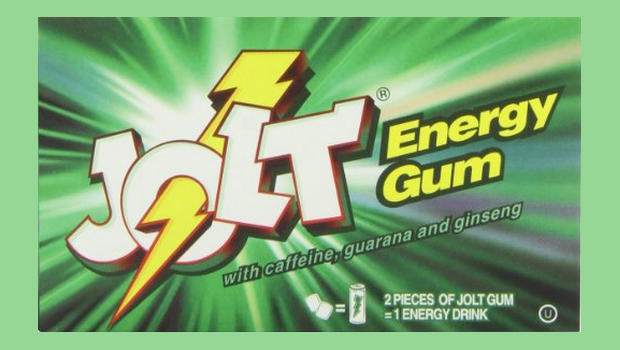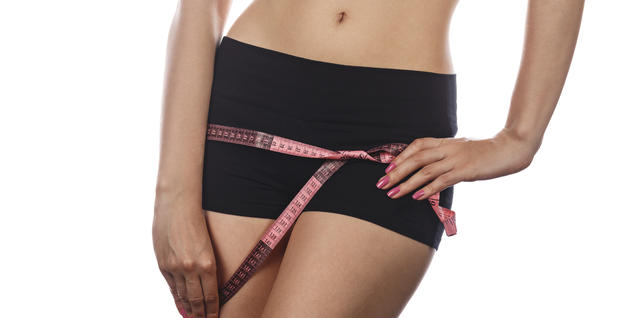11 things you should know about caffeine
Caffeine is the most commonly used stimulant in the world. It's cheap and easily accessible -- available in both natural sources, like coffee, tea and cocoa, and as an additive in sodas, energy drinks, over-the-counter drugs, a number of foods and some surprising other products.
Researchers at Johns Hopkins University estimate that 80 to 90 percent of people in North America are habitual consumers of caffeine.
While numerous studies suggest there are health benefits from caffeine (or caffeinated coffee), there can also be risks, especially when consuming too much. Read on to find out more about the substance that helps keep so many of us buzzing through the day...
What is caffeine?
Caffeine is a drug that is found naturally in the coffee bean, tea leaf, kola nut and cacao pod. It is odorless and has an extremely bitter taste. In fact, scientists believe that plants began producing caffeine as a defense mechanism. "The thought is that plants produce it to keep it from being eaten," Jennifer Temple, an associate professor at the University of Buffalo who specializes in caffeine research, told CBS News. "It's naturally produced in these plants to deter pests."
Humans, however, transformed those natural sources into a vast array of foods, beverages and medications that convey the familiar caffeine energy boost.
What caffeine does to the body
Once you ingest caffeine, it enters the bloodstream through the stomach and small intestine and can begin to take effect within 15 minutes.
Caffeine blocks the action of the brain chemical adenosine, which is associated with sleep, according to Harvard Medical School. However, because caffeine looks like adenosine to a nerve cell, it binds to adenosine receptors. When this happens, the cells speed up, causing blood vessels to constrict. Caffeine also triggers the release of adrenaline, the "fight or flight" hormone. The release of adrenaline causes muscle tightening and an increased heart rate and blood pressure.
The physical effects of caffeine largely wear off within hours.
Occasional low doses of caffeine have been found to produce "positive mood effects such as increased well-being, happiness, energetic arousal, alertness, and sociability," Johns Hopkins researchers report. Regular users build up a tolerance and may not experience the same positive effects; they need that morning caffeine infusion just to help overcome sleepiness and lethargy.
How much is in there?
A 6-ounce cup of regular coffee contains between 75-150 milligrams of caffeine, according to Johns Hopkins researchers. Instant coffee has less, an average of about 70 milligrams, while an espresso contains about 40 milligrams.
Six ounces of brewed tea has about 30 to 90 milligrams of caffeine. A 12-ounce cola may have 30 to 60 milligrams. An 8.4-ounce can of Red Bull Energy Drink boasts 80 milligrams.
Dark chocolate contains about 30 milligrams of caffeine in a 1.5-ounce serving, three times more than milk chocolate.
How much is too much?
For healthy adults, the FDA reports that 400 milligrams of caffeine a day - about 4 or 5 cups of coffee - are safe to consume without any dangerous or negative side effects.
But Temple said how much caffeine a person can safely consume varies from person to person. "There is a sweet spot in terms of caffeine that gives you optimal feelings of arousal and energy without making you feel jittery and ill," she said. "Those response curves differ for different people. Some people are very sensitive to caffeine and other people are very tolerant of caffeine."
The FDA has not set any caffeine intake guidelines for kids, but the American Academy of Pediatrics discourages caffeine consumption in children and adolescents.
In massive doses, caffeine is lethal. According to the University of Washington, a fatal dose of caffeine is more than 10 grams, the equivalent of 80 to 100 cups of coffee. There have been reports of people dying of a caffeine overdose. In July 2014, for example, an 18-year-old was found dead in his home after overdosing on pure powdered caffeine, which led to a cardiac arrhythmia and seizure. Pure caffeine is an unregulated substance that can be bought online and contains caffeine that is equivalent to 25 cups of coffee in one teaspoon.
Health benefits
Numerous studies have touted the physical and mental health benefits of caffeine. Caffeine has been shown to be a performance enhancer, boosting strength and reducing some of the effects of physical exertion.
Research also shows that caffeine may have some brain benefits. A study in JAMA Internal Medicine found that caffeine consumption is linked to lower rates of depression in women; the benefits increased if they consumed more caffeine. Researchers at Johns Hopkins also found that caffeine may enhance long-term memory.
Another 2015 study found that people who consumed four cups of coffee or more per day had a 20 percent lower risk for developing malignant melanoma than individuals who drank less coffee.
However, Temple pointed out that much of the research in this area shows an association rather than proving cause and effect, so it's unknown whether caffeine is the reason for the perceived benefit or if there are other factors at play. "There's not a whole lot of consistent empirically supported health benefits of caffeine," she said.
Health risks
There are some downsides to caffeine. It can cause an increase in blood pressure, which stiffens arteries. Research shows regular high caffeine consumption may be problematic for people with type 2 diabetes, making it difficult to keep blood sugar under control. Some data suggests caffeine has an effect on women's bones and can lead to osteoporosis.
Caffeine has also been known to worsen certain conditions including insomnia, heartburn and anxiety.
When too much caffeine is consumed, it can make you feel jittery and shaky, make it hard to fall asleep, cause headaches or dizziness, make your heart beat faster or cause abnormal heart rhythms, and may lead to dehydration.
Medicinal uses
Caffeine that has been treated with a salt of sodium or potassium can be used as a medication to help premature babies breathe. It has also been used to help young children who have breathing problems after surgery. Additionally, caffeine is used in certain medications including ergotamine to treat migraine headaches and is sometimes combined with aspirin and acetaminophen to boost their effectiveness.
Is it an addiction?
People can develop a tolerance to caffeine within a few days. "The body makes adjustments to regular use of caffeine, so you might need increasing amounts to experience the same effects," Maggie Sweeney, a postdoctoral research fellow in the behavioral pharmacology research unit at Johns Hopkins University, told CBS News.
Sweeney and her colleagues are currently evaluating whether caffeine dependence should be listed as a disorder in the Diagnostic and Statistical Manual of Mental Disorders (DSM).
Withdrawal symptoms
Typical caffeine withdrawal symptoms include headache, muscle pain, irritability, depression, flu-like symptoms and fatigue. Symptoms can occur within 24 hours after the last dose of caffeine and may last from two days to one week, according to research out of Johns Hopkins University.
The severity of caffeine withdrawal can vary from mild to extreme depending on the specifics of a person's caffeine habit. Severe cases have been shown to impair a person's day-to-day activities or render them at least temporarily incapacitated.
Caffeinated foods
In addition to coffee, tea, cola and the booming category of highly caffeinated energy drinks, the stimulant is also being added to a growing array of food products, including waffles, hot sauce, and gum. It can also found in some coffee-flavored foods like ice cream and yogurt.
"Manufacturers add caffeine to these products for a number of reasons but primarily because consumers want it," Temple said.
Caffeine you can wear?
It's not just in foods and drinks -- caffeine is even being added to consumer products like pantyhose and soap. "The idea is that the caffeine will be absorbed through the skin. These are very fringe products. There's not any real data to look at these things, but they're out there," Temple said.
In 2014, two companies paid $1.5 million in refunds to consumers to settle a complaint by the U.S. Federal Trade Commission over their caffeine-infused shapewear. The FTC said they falsely claimed the products could slim the body and fight cellulite.
"Caffeine-infused shapewear is the latest 'weight-loss' brew concocted by marketers," Jessica Rich, Director of the FTC's Bureau of Consumer Protection, said in a statement. "If someone says you can lose weight by wearing the clothes they are selling, steer clear. The best approach is tried and true: diet and exercise."



